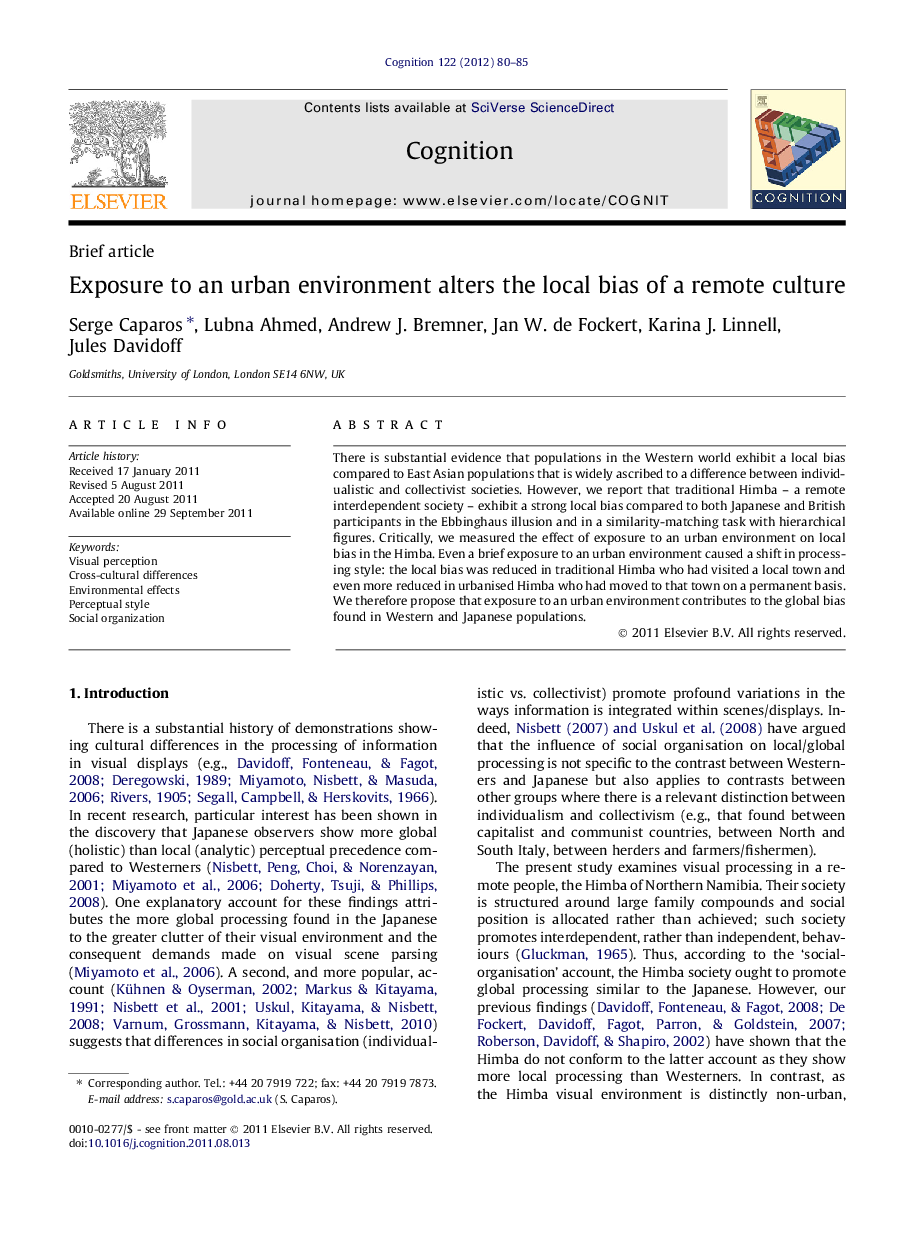| Article ID | Journal | Published Year | Pages | File Type |
|---|---|---|---|---|
| 926941 | Cognition | 2012 | 6 Pages |
There is substantial evidence that populations in the Western world exhibit a local bias compared to East Asian populations that is widely ascribed to a difference between individualistic and collectivist societies. However, we report that traditional Himba – a remote interdependent society – exhibit a strong local bias compared to both Japanese and British participants in the Ebbinghaus illusion and in a similarity-matching task with hierarchical figures. Critically, we measured the effect of exposure to an urban environment on local bias in the Himba. Even a brief exposure to an urban environment caused a shift in processing style: the local bias was reduced in traditional Himba who had visited a local town and even more reduced in urbanised Himba who had moved to that town on a permanent basis. We therefore propose that exposure to an urban environment contributes to the global bias found in Western and Japanese populations.
► Traditional Himba exhibit a local visuospatial bias compared to British and Japanese. ► This local bias decreases with increasing exposure to an urban environment. ► Even a single exposure can decrease the local bias. ► Changes in local bias are found in both the Ebbinghaus illusion and a Navon task. ► Cluttered urban environments contribute to the global bias found in British/Japanese.
